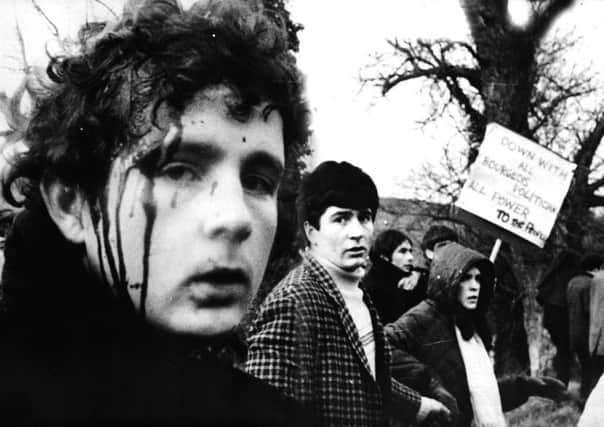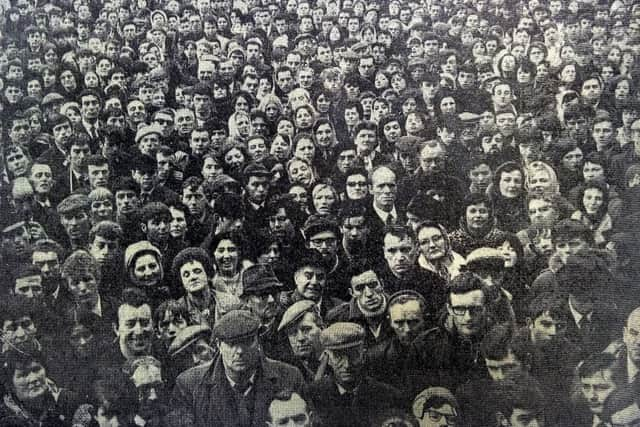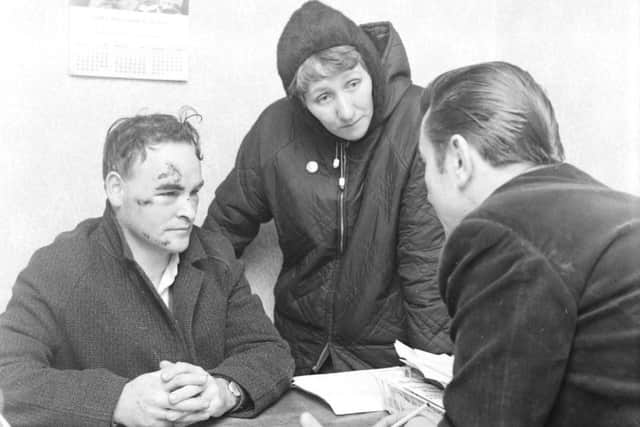Fifty year ago the People's Democracy organised civil rights march from Belfast to Derry bravely completed its journey


On January 4, 1969, four days after the radicals of the civil rights movement left Belfast on their own version of the ‘Selma to Montgomery’ march of 1965, a unionist mob tried to beat it off the roads at Burntollet.
“The marchers, about 300 strong, were ambushed at Burntollet Bridge. Here a crowd of Paisleyites numbering over one hundred waited for the marchers on high ground overlooking the bridge,” the ‘Journal’ reported.
Advertisement
Hide AdAdvertisement
Hide Ad“As the students reached the bridge, they were subjected to a steady barrage of bricks, stones, and pieces of iron in addition to several petrol bombs which landed amongst them. Then a section of the mob attacked the marchers on the bridge, using clubs and cudgels, some with nails protruding from them,” the paper reported.


The protestors were pursued though the fields as they fled the assault with “young girls forced into the knee-deep river in an effort to escape”. Regrouping after half an hour they came under further petrol bomb attack from the ditches down the road.
As the marchers continued to Derry they came under ambush again from a “crowd of about 50 extremists, one waving a Union Jack” at Thompson’s Corner at the bottom of Daly’s Brae
“As they passed by, the usual fusillade of stones filled the air but here the police moved in fast and dispersed the crowd. But not before another couple of students were knocked senseless by stones.”
Advertisement
Hide AdAdvertisement
Hide AdAt this point members of the Revolutionary Socialist Alliance joined the march before it was attacked for a third time by a mob of “several hundred extremists” at Irish Street.


“As the stones, bottles and other missiles began to fill the air, police dismounted from their tenders and moved in on the attackers. Once again the marchers, now well over 1,000 strong had to break ranks and run for it.”
And yet again there was “a murderous hail” from the Spencer Road quarry.
“One, then another was led away with blood streaming from head wounds and then there were calls for a police baton charge to clear the quarry face. About 50 police charged up the entry but the marchers were still pinned and it was about twenty minutes before they were able to pass on to the bridge.”
Advertisement
Hide AdAdvertisement
Hide AdFinally, the march made its way across Craigavon Bridge where it was re-routed at Carlisle Square. The demonstrators were stoned again as they made their way down John Street by a crowd of several hundred that had gathered behind police lines.
“From that point on it was cheers all the way as the weary students moved up Foyle Street and into Guildhall Square, where about 3,000 cheering people gave them a tumultuous welcome.”